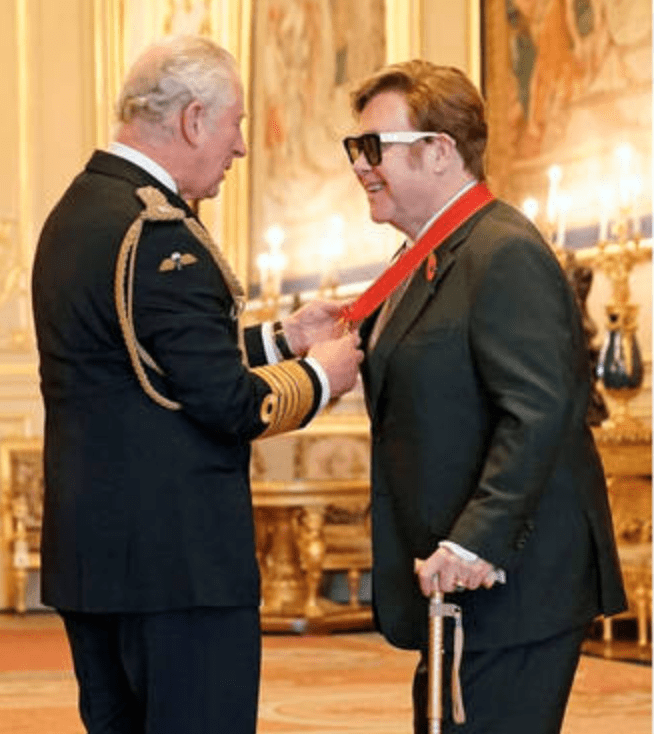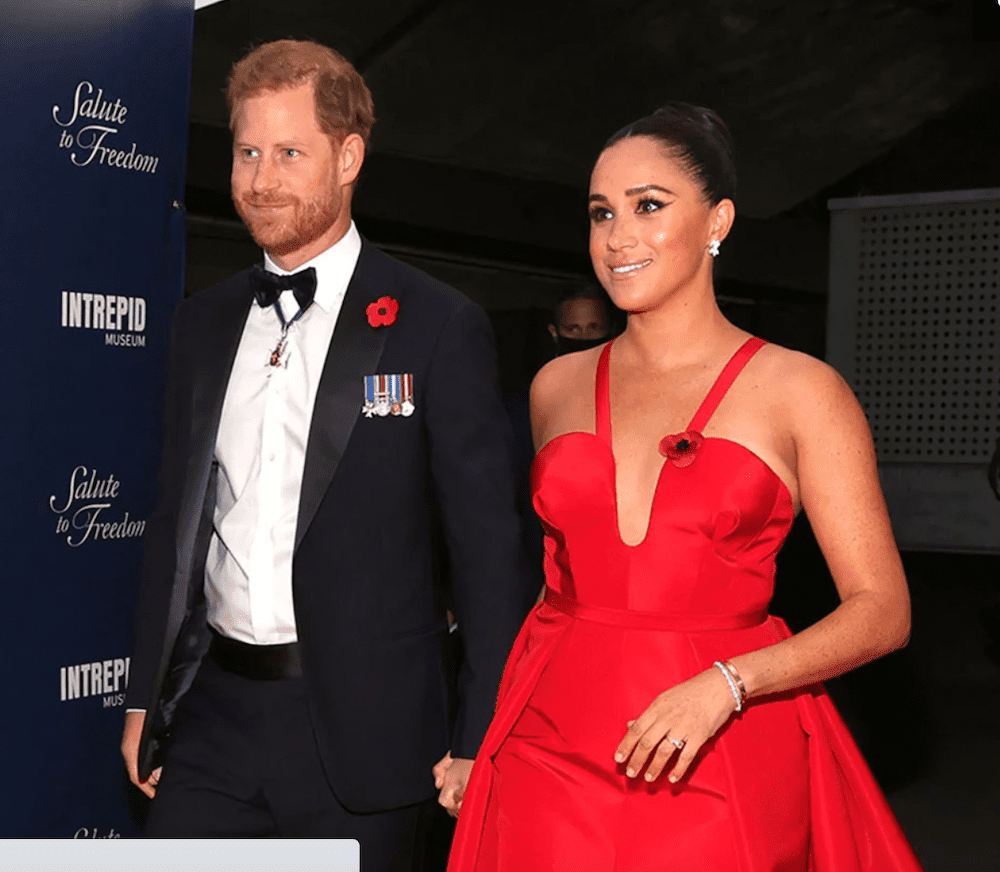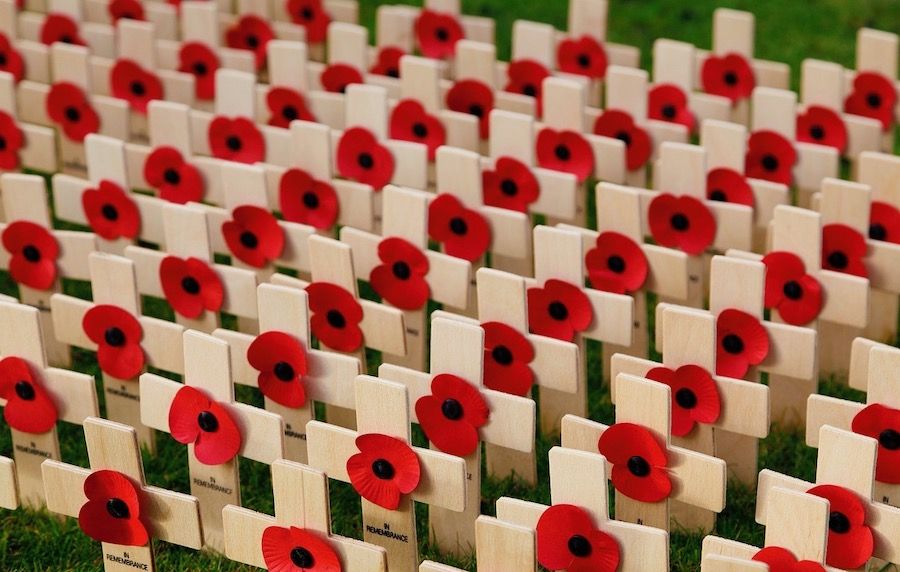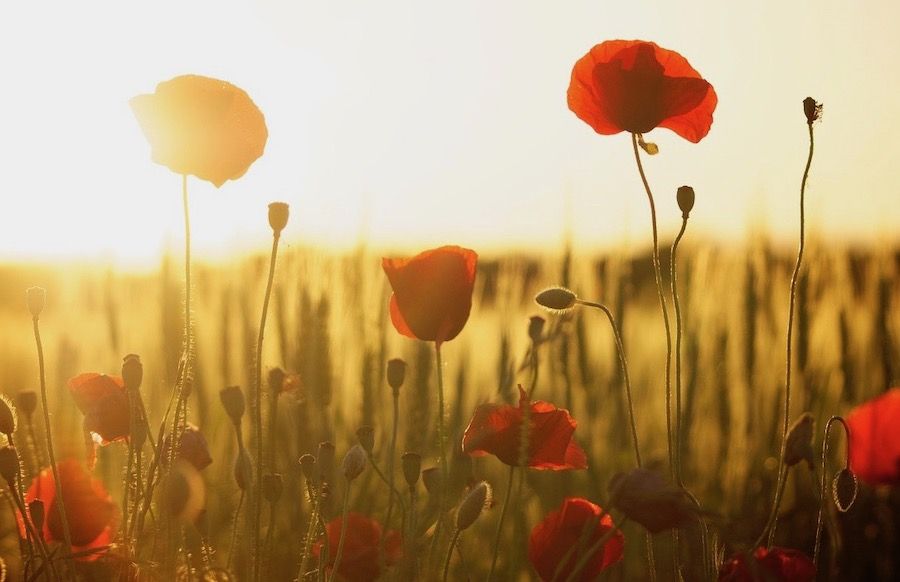Why Elton John, Prince Harry and Meghan Markle Wore Poppy Pins
By Jill Brooke

A poppy pin was worn symbolically by Elton John, Meghan Markle and Prince Harry this week.
The flower is a symbol both in England and the United States for military remembrances.
We all know how Elton John is a big flower lover – buying thousands of blooms for his homes weekly and even spending over $100,000 a year annually on gorgeous arrangements.
Which is why it was so touching that the singer wore a poppy on his lapel – a symbol of Veteran’s Day and remembrance – when Prince Charles gave him the highest civilian award as a “member of the Order of the Companions of Honor,” which recognizes people who have made “a major contribution to the arts, science, medicine, or government lasting over a long period of time.”

Meghan Markle was also seen wearing a poppy pin on her black shirt when the Duchess of Sussex joined New York Times DealBook Online Summit in New York City Tuesday to speak about women’s efforts to achieve economic and professional parity in the workplace.
Photographer Carl Kessler asked her about the pin to which she replied, “It’s for Remembrance Day, to honor armed forces members.” Prince Harry served in the army for 10 years.

Later Prince Harry presented the inaugural Intrepid Valor Awards to five service members, veterans and military families that People Magazine says are living with the invisible wounds of war. The gala raised money for the Intrepid’s educational program for students and programs to support veterans.
Jon Bon Jovi, who collaborated on a song for Harry’s Invictus Games also received an award for his work as Chairman of the Jon Bon Jovi Soul Foundation as did iHeart Media Chairman and MTV founder Bob Pittman for the 2021 Intrepid Salute Award, which honors outstanding business and philanthropic achievements.
Some have thought the poppy flowers were popularized because of their blood-red color signifying bloodshed as a result of someone’s sacrifice to their country.
This is a logical assumption
Another interpretation from classical mythology is that the scarlet flower with its ebony interior – black is also a color of death – signifies the promise of resurrection after death. Since these ancient times, poppies have long been used as a symbol of sleep, peace, and death. In both Greek and Roman myths, poppies were used as offerings to the dead. Poppies were also used as emblems on tombstones to symbolize eternal sleep.
After all, opium is extracted from poppies and used as a sedative. Therefore, the added appeal of its use to represent eternal sleep prevails.

However, many history buffs credit Canadian surgeon and soldier John McCrae for popularizing its use for military remembrance ceremonies. He wrote the poem, “In Flanders Fields” during World War I at a place where poppies were plentiful and grew around gravesites.
“In Flanders fields, the poppies blow
Between the crosses, row on row,
That mark our place, and in the sky”
McCrae was inspired to write this poem on May 3, 1915, after presiding over the funeral of a friend and fellow soldier Lieutenant Alexis Helmer. Legend has it that he didn’t even like his poem and discarded it. But his fellow soldiers, moved by the sentiments, retrieved the poem which inspired many.
Poppies were a cultural reference point to many at that time. Going back to the destruction of the Napoleonic wars of the early 19th century, red poppies magically grew around the bodies of the fallen soldiers on what seemed like a barren land. Poppies became an image of hope for peace with the unspoken message that sacrifice was noble for the greater good. In late 1914, the fields of Northern France and Flanders were once again ripped open by guns blazing and fighting. Once the conflict was over, one of the only plants to grow were the poppies.
Like the perennial flower, McCrae’s poem, “In Flanders Fields,” also spread and pollinated in magazines and the public consciousness across continents.
Among those who were moved by the poem was Moina Michael, an American professor in Georgia. She subsequently wrote her own poem in 1918 titled, “We Shall Keep the Faith.” Her enthusiasm for the poppy as a symbol of remembrance earned her the nickname, “The Poppy Lady.” In fact, the tireless Michael campaigned to make the poppy the internationally-recognized symbol of remembrance and welfare for war veterans.
One of her strategies was to raise funds for returning veterans of World War I by selling poppies. So while McCrae is credited for the poem, no one can create a movement alone. Moina Michael is also credited as the founder of the Memorial Poppy in the United States.
Meanwhile, a French woman, Anna Guerin, also championed poppies to England. The Royal British Legion ordered 9 million of those poppies in 1921, for fundraising, the year the organization was founded. In fact, the following year in 1922, Major George Howson, a British army officer, established the Poppy Factory in Richmond, England to employ disabled veterans. Even now, the factory employs disabled veterans to produce the wreaths for the Royal Family and the Royal British Legion’s annual Poppy Appeal.
Since 1924, wearing poppies has been a custom in the U.S. for honoring those who sacrificed their lives for the greater good. Just recently in 2014, the Ukrainians have also started wearing the poppy as a symbol of the victory over Nazism and as a commemoration of the victims of World War II.
Its enduring significance shows no sign of waning.

Jill Brooke is a former CNN correspondent, Post columnist and editor-in-chief of Avenue and Travel Savvy magazine. She is an author and the editorial director of FPD and floral editor for aspire design and home magazine and contributor to Florists Review magazine.
Photo Credit: Instagram, Pixabay, People Magazine
